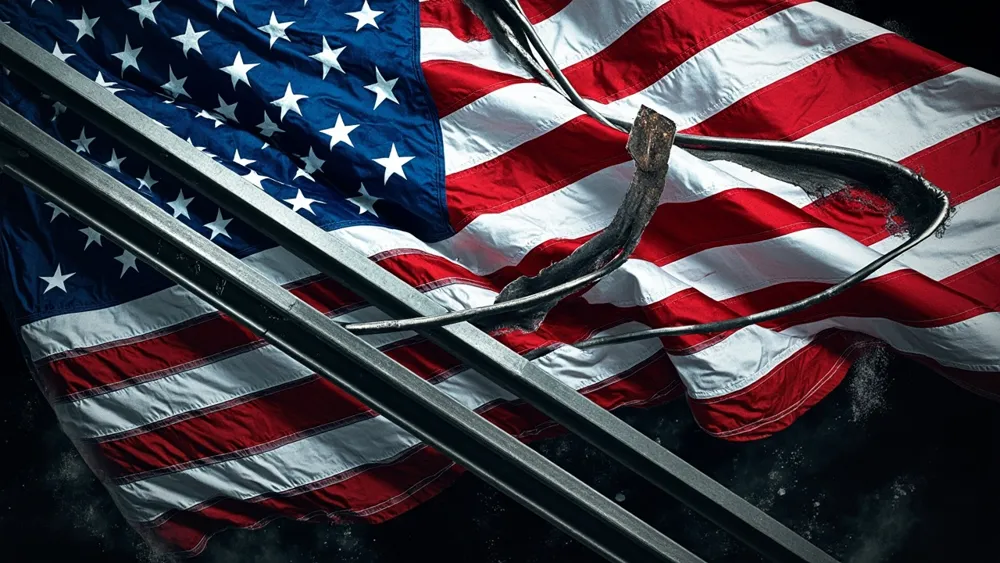U.S. Steel shares surge as Trump approves Nippon takeover with government 'golden share'

The recent approval of the merger between U.S. Steel and Japan’s Nippon Steel stands at the confluence of corporate strategy and national security, a development that bears significant implications for both the steel industry and geopolitical dynamics. This merger not only underscores the importance of the steel sector in global manufacturing but also reflects the increasingly entwined nature of politics with corporate decisions, particularly under the current U.S. administration. This commentary delves into the ramifications of this deal, while questioning its long-term sustainability in light of broader market trends.
Following President Trump's executive approval, U.S. Steel saw its stock rise by approximately 5%, closing at $54.85, indicating strong market confidence in the merger. However, the approval was accompanied by the implementation of a national security agreement, featuring a unique 'golden share' that grants the U.S. government considerable influence over the company's strategic decisions. While this measure may temporarily assuage fears regarding job losses or relocations, can we expect such protective strategies to encourage long-term foreign investment? Historical precedents remind us of the potential pitfalls inherent in government intervention—such as during the dot-com bubble where regulatory overreach stifled innovation amidst attempts to safeguard domestic interests.
From a corporate strategy perspective, the integration of U.S. Steel under Nippon’s operational umbrella raises questions regarding competitiveness on both domestic and global fronts. With the U.S. relying heavily on steel imports, a robust and efficient local manufacturer is essential not merely for economic stability but also for national security. Analysts may point to the positive side of this merger in terms of job creation and industry sustainability, yet it simultaneously creates a dual pressure point: investors will be closely monitoring how the golden share impacts corporate governance and decision-making processes. This could result in unintended consequences where bureaucratic inefficiencies fundamentally alter operational agility, potentially undermining U.S. Steel's ability to adapt swiftly in a fast-paced global market. Moreover, given the global steel market's ongoing shifts, marked by fluctuating prices and supply chain disruptions, the timing of this merger raises further intrigue. Will this partnership enable the newly formed entity to exploit economies of scale and innovate faster, or will it hinder flexibility in responding to market challenges?
Looking ahead, both companies—and the broader U.S.-Japan relationship—will need to navigate this transition carefully. For institutional investors, the merger presents an opportunity to evaluate the projected EBITDA margins and growth trajectories of the combined entity. However, there remain significant risks associated with such a politically charged agreement, including the backlash from labor advocates who may perceive government measures as reactive rather than proactive. In conclusion, while the merger of U.S. Steel and Nippon Steel is celebrated as a victory for national interests and market competitiveness, stakeholders must remain vigilant. Regulatory oversight should enhance rather than hinder operational independence. As the industry evolves, both corporations and policymakers must prioritize sustainable practices that benefit not only shareholders but the workforce at large, ensuring that this merger truly fortifies the future of steel manufacturing in America. If the past teaches us anything, it is that today's strategic moves can have pronounced and unforeseen consequences.
Read These Next

China's Home Appliance Trade-In Policy Resumes After Adjustments
China's home appliance trade-in policy extends to 2025, boosting consumer engagement and driving sales nationwide.

Financial Recovery and Market Resilience: Analyzing ST 迪威迅's Recent Developments
Analysis of ST 迪威迅's annual report highlighting financial recovery, significant market changes, and ongoing risks.

Yum China Holdings, Inc.: Analyzing Share Repurchase Strategies and Financial Outlook
An analysis of Yum China Holdings, Inc.'s financial activities, including share repurchase strategies reflecting growth confidence, financial trends, management insights, and associated risks.
